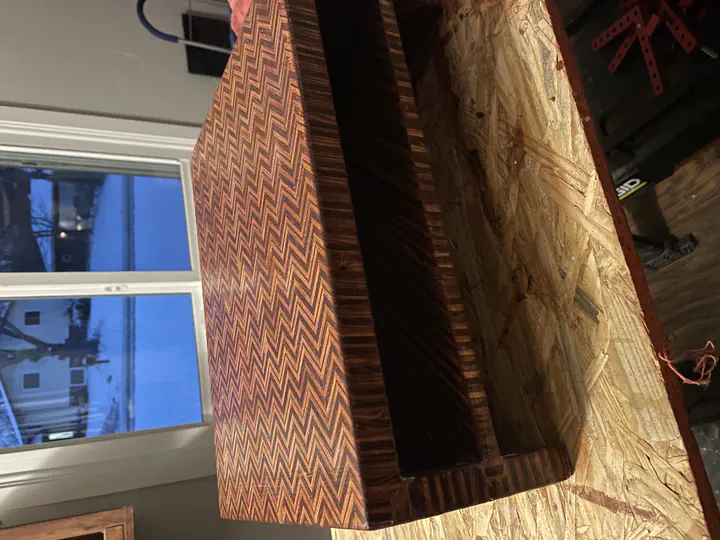Laptop Stands

This was my first attempt at “finished” woodworking, as these laptop stands would be for indoor use, and therefore needed to loop better than something which was passable for the garage.
Pictures
| Finished! |
Lessons Learned
Materials
- Use good quality plywood. The higher quality, the better. HOWEVER, don’t use plywood which has a veneer on it, as it will be prone to breaking when glued. I found this out the hard way when working with some really nice looking oak veneer plywood which I found by the side of the road and plane the stain off of.
Measuring and Cutting
Precisely cutting the width of strips at each stage is critical. Even small (1/32") deviations add up over time and lead to the chevrons not lining up perfectly. Having a thin rip jig makes this a LOT more precise. I’m still not perfect, but much closer than before.
Because the glued slabs are prone to cracking/breaking at every stage, cut things about 1/2" larger than you need when doing planing/sanding so that any breakages are not fatal.
Because of the nature of what you’re planing (plywood edges), things are still fairly rough coming out of the planer, so you MUST leave enough buffer that you can sand things down without making the piece too thin. This is especially critical for slabs which are ultimately intended to fit into grooves/dados.
When cutting, raise the blade to its full height, contrary to the usual guidance, because that will give the crack/chip/tearout prone glued plywood maximum support, because the blade will be pressing and cutting into it at 90 degress, rather than something less.
Assembly
- A dry fit is absolutely essential. Not just lightly clamping things together, because I’m afraid that the pieces will not come apart without breaking. You need a full dry fit to make sure all the dados/grooves line up with the width of the shelf. Failure to do this results in stands which are off kilter and have to be sanded until they are mostly square again.
Staining
- This is one project where you have to stain the pieces BEFORE final assembly, because it is really tight if you try and stain assembled.